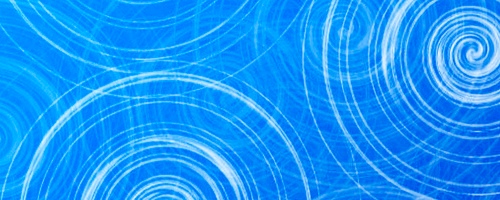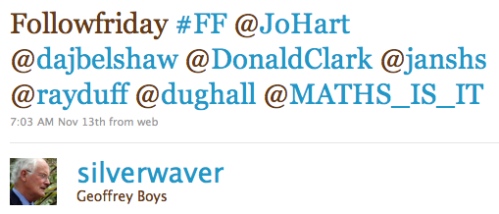
CC BY-SA misstitina86 @ Flickr
I’ve been trying to squeeze in my Ed.D. research when I can recently, sometimes rising well before the sun does! I’m at the stage (seedougbelshaw.com/thesis) where I’m nearing the end of my first run through my Literature Review. I want to have it pretty much finished when I have a video chat with my supervisor next week.
This post is to summarize what I’ve been learning (and attempting to synthesize) about so-called ‘affinity spaces’, ‘secondary orality’ and ‘digital epistemologies’. Much of the following comes from, or was thinking provoked by, Lankshear and Knobel’s New Literacies (2006). My notes on the books and articles mentioned, as ever, are available at dougbelshaw.com/wiki. 🙂
Literacy is all about communication. Literacy therefore is all about creating or reading texts for a particular purpose. This doesn’t change when we move into the realm of ‘digital literac(ies)’. It was Gee (2004) who came up with notion of ‘affinity spaces’. These spaces are characterized by the following elements (taken from this useful post):
- A common endeavor is primary, not aspects such as race, class, gender, or disability that can often hinder communication.
- Newbies, masters, and everyone else share common space
- Some portals are strong generators (whatever gives the space some content)
- Content organization is transformed by interactional organization
- Both intensive and extensive knowledge are encouraged
- Both individual and distributed knowledge are encouraged
- Dispersed knowledge is encouraged
- Tacit knowledge is encouraged and honored
- Many different forms and routes to participation
- Many different routes to status
- Leadership is porous and leaders are resources
In other words, an affinity space is somewhere where informal learning takes place and which ‘bridge[s] barriers of age, race, socio-economic status, and educational level, and allow[s] each user to participate as he/she is able’ (Gee, 2005). They are hotbeds of literate practices.
Some – e.g. Davies (2006) – discuss the ‘Third Space’ that websites such as Flickr allow to flourish:
Third Space … constitutes the discursive conditions … that ensure that … even the same signs can be appropriated, translated, rhetoricized and read anew. (Bhabha, 1994 – quoted in Davies, 2006)
The example that is used time and again in the literature is that of Fan Fiction as the genre is a relatively stable one. Other affinity spaces tend to be characterised by memes. Knobel (2006) mentions that, indeed, affinity spaces are ‘perfect conduits’ for memes and that the former ‘can be fixed or fleeting and are always thoroughly relational in nature’. Lankshear & Knobel (2006:236) quote Gee as saying the following about affinity spaces:
[Affinity spaces are] specially designed spaces (physical and virtual) constructed to resource people [who are] tied together… by a share dinterest or endeavor… [For example, the] many many websites and publications devoted to [the video game, Rise of Nations] create a social space in which people can, to any degree they wish, small or large, affiliate with others to share knowledge and gain knowledge that is distributed and dispersed across many different people, places, Internet sites and modalities (magazines, chat rooms, guides, recordings).
It is clear even from the short introduction above that affinity are at the other end of the scale from the traditional classroom. They are based on interest rather than compulsion, the idea that everyone participating is of equal status rather than one person being in control, and emerging ‘rules’ rather than those imposed top-down.
The driving question behind my Ed.D. thesis is What does it mean to be digitally literate? Lankshear & Knobel (2006:243) make the point that definitions of digital literacy make little or no reference to memes, creativity or ‘digital playfulness’:
[T]he phenomenon of online memes challenges the growing dominance of ‘digital literacy’ conceptions of what it means to be a competent user of new technologies and networks… Digital literacy mindsets do not pay sufficient attention to the importance of social relations in developing, refining, remixing and sharing ideas in fecund and replicable ways, or to the important role that memes play in developing culture and creativity. (my emphasis)
The authors proceed to discuss Steven Johnson’s Everything Bad is Good for You, comparing books with ‘networked texts’. Digital literacy, of course, is not necessary to read the former – but it’s perhaps the inherently social element of the latter that sets it apart from print-based classical conceptions of literacy.
It is this idea of ‘text plus something else’ that will lead me to bring in the work of Walter Ong to my thesis. Ong (1982, 2002:3) talks of ‘secondary orality’ – i.e. a set of social practices that resemble purely oral cultures but which are predicated upon technologies surrounding literacy:
The electronic age is also an age of ‘secondary orality’, the orality of telephones, radio, and television, which depends on writing and print for its existence.
Ong’s point (summarized well at Wikipedia) is that oral cultures are additive in a way that solely print-based cultures are not. Writing before the dawn of the internet, Ong rather presciently explained that oral cultures allow ideas to be revisited in different ways that books and articles often do not. Positions are less fixed. As Douglas (1998:160) puts it in relation to the internet, ‘when you spin an argument in hypertext, you can choose to represent a world that is strictly ‘either/or’ or one that is ‘and/and/and’.’ Chris Lott made an interesting presentation entitled Closing the Gutenberg Parenthesis related to this recently.
All of which takes us neatly to the question of digital epistemologies. I need to check out A New Literacies Sampler before actually writing this section of my thesis, but I’m fairly sure where I’m going in abstract. Epistemology is, of course, philosophical questions about the nature and scope of knowledge. Digital epistemologies, therefore, refer to how knowledge is different in a digital world. This obviously has an impact and a bearing upon notions of T/truth. Truth (with a capital ‘T’) is received – and often ‘revealed’ – truths about the world that cannot (or should not) be questioned. Education has often been like this, leading to a transmission model of education.
On the other hand, truth (with a small ‘t’) is provisional knowledge, tentative conclusions based upon available evidence. This is the Pragmatist position, a philosophical methodology I’m employing in my thesis. A lot of what happens online – in fact most of what happens online is concerned with truth with a small ‘t’. As Lankshear & Knobel (2006:242-3) put it:
[A] seemingly increasing proportion of what people do and seek within practices mediated by new technologies – particularly computing and communications technologies – has nothing directly to do with true and with established rules, procedures and standards for knowing. That is most emphatically not to say that these matters are no longer important. Rather, it is to draw attention to the fact that today’s learners are increasingly recruited to other values and priorities.
Given the nature of the above, it seems out of place to tie everything together into a neat conclusion at the end of this post. Suffice to say, therefore, that memes and their impact on affinity spaces, the concept of ‘secondary orality’ in respect to the internet, and the links between literacy, truth and epistemology will certainly be featuring towards the end of my literature review.
I’ve still quite a bit of work left to do on this, so do feel free to point me towards any related and useful blog posts, journal articles books, etc.! :-p
Bibliography
- Davies, J. (2006) Affinities and Beyond! Developing Ways of Seeing in Online Spaces (E-Learning, 3:2, 2006)
- Douglas, J.J. (1998) ‘Will the most reflexive relativist please stand up: hypertext, argument and relativism’ (in I. Snyder (ed.), Page to Screen, London, 1998)
- Knobel, M. (2006) Memes and Affinity Spaces: some implications for policy and digital divides in education (E-Learning, 3:3, 2006)
- Knobel, M. & Lankshear, C. (2006) New Literacies: Everyday Practices & Classroom Learning
- Ong, W. (1982, 2002) Orality and Literacy: The Technologizing of the Word





